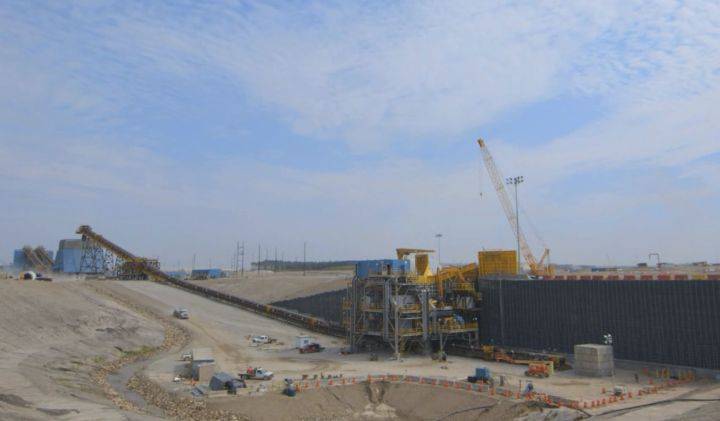The chief of the Athabasca Chipewyan First Nation is voicing his concern over yet another incident at the Kearl oilsands facility, located about a 90-minute drive north of Fort McMurray.

In a statement issued Thursday, Chief Allan Adam said the Nov. 13 incident, involving water, has “once again impacted the environment on our traditional territories.”
A spokesperson with Imperial told Global News runoff passing through a culvert partially eroded an area around that culvert which resulted in the water collecting sediment from nearby soil.
Imperial said it happened on Nov. 13, and was quickly stopped by field personnel who placed materials in the channel to slow the flow of the water and prevent further migration of the sediment.
A spokesperson for the company said the water was surface water runoff from a settling pond on Imperial’s property and clarified that the water was not used in the processing of oil. The company said it is responsible for testing all water on its Kearl site before releasing it, and in this case the runoff would have been tested for sediment level before it was released. The sediment then entered afterwards with the soil erosion at the culvert site.
“Field data collected from the channel on Nov. 14 indicated that levels of sediment were back below the allowable limit,” said Lisa Schmidt, a spokesperson with Imperial. “We are working to conduct the necessary repairs and we will continue routine sampling to ensure sediment levels remain within the allowable limit for the Muskeg River as prescribed by the (Alberta Energy) Regulator.”
The AER said the incident involved “a release of water.” In total, the release involved about 670,000 litres of water.
Adam said the water contained approximately 140 mg of suspended solids per litre, more than four times the legal limit.
On Friday, the Ministry of Environment and Protected Areas of Alberta told Global News they were also aware of the incident.
“The AER has assured us that the culvert is being fixed and extra testing is being done to ensure there are no impacts to drinking water,” said press secretary Ryan Fournier. “We want to be clear; this was not a leak from a tailings pond and the water that was released is not processed water from tailings. This is drainage from the surrounding landscape.

Get breaking National news
“Safe and secure drinking water for Albertans is our top priority, and we will continue working with local and Indigenous communities to ensure the continued safety of their drinking water supply.”
The incident is one of several at the Kearl site over the past 18 months including a faulty tailings pond that leaked wastewater for several months before being reported and a massive drainage pond spill of over five-million litres of contaminated wastewater in early 2023.

“We are further dismayed that our local MLA and minister of energy and minerals, Brian Jean, said that Imperial’s operations were ‘top notch’ this week,” said Adam. “Brian didn’t contact us once during or since the Imperial tailings spill to check into the well-being of our frightened community. So, I am concerned that he is only representing one side of the story with this latest comment.”
In a Nov. 15 post on X, formerly known as Twitter, just two days after the water spill occurred, Jean said he toured the Kearl oilsands site and described the company’s commitment to environmental protection as “top notch.”
Jean also addressed the spill at the Kearl site during question period in the Alberta legislature on Nov. 22 where he said he did see “some issues” at the Kearl site and raised them with senior management.
“This particular spill is from muddy water from the surrounding area, it’s not part of the tailings pond issue,” he said. “It’s just muddy water Mr. Speaker, and that muddy water is from rain and snow.”
Jean went on to say water monitoring and air monitoring continues to be done in the area.
The AER confirmed to Global News it was notified of the spill on Nov. 13 and was monitoring water quality in the area.
“The AER will continue to review the water quality samples to determine any potential impacts to fish and fish habitat,” said Teresa Broughton, media manager with the AER. “Imperial and the AER have contacted Indigenous communities in the area.
“Based on initial testing, the release into the river was 110 milligram per litre over the approved limit. Testing on Nov. 14 and 15 indicated the levels of TSS (total suspended solids) downstream of the release site had reduced and were now within range of background conditions. Water samples were also collected at the environmental compliance point and downstream of the culvert failure. The operator is repairing the culvert and will continue to conduct additional sampling to ensure TSS remain reduced prior to re-initiating release from the polishing pond.”
The Athabasca Chipewyan First Nation said it was looking forward to hearing from Imperial and the AER about this latest incident on Nov. 28.






Comments